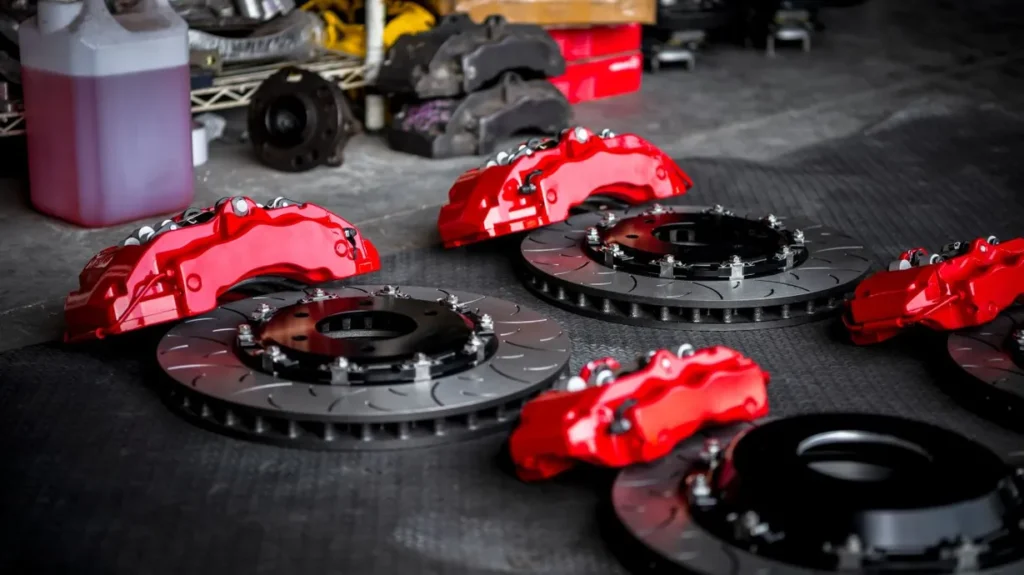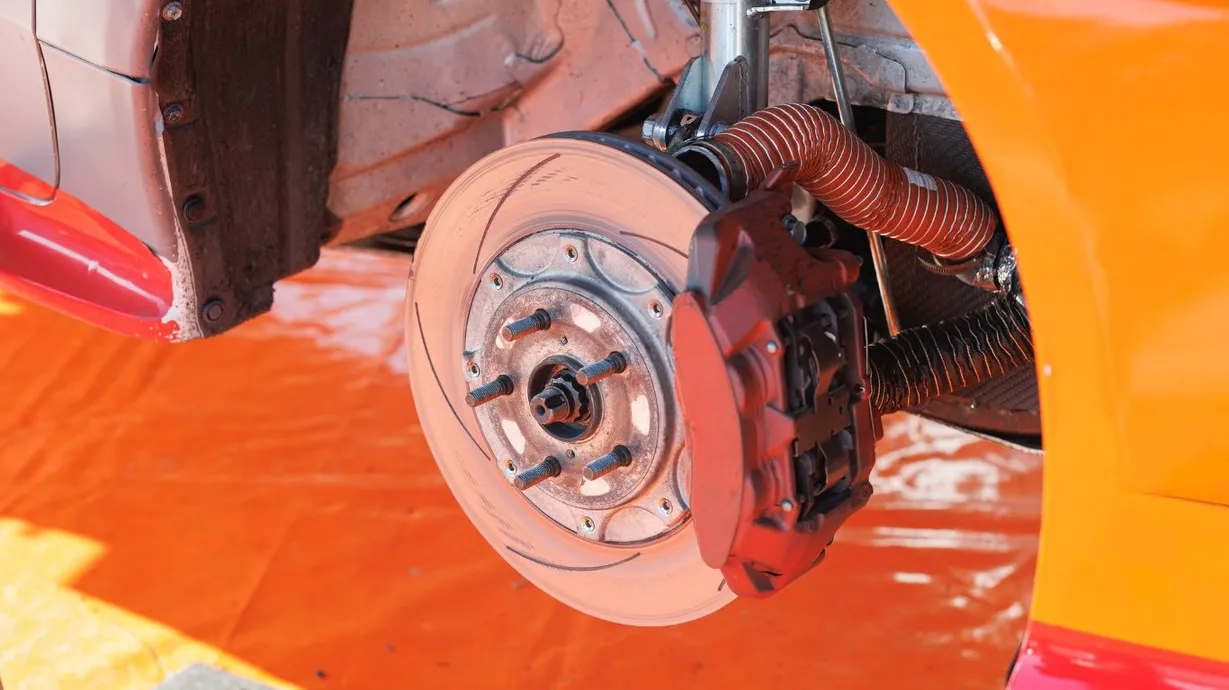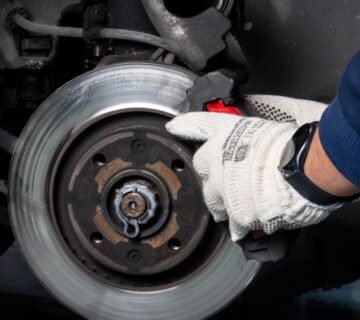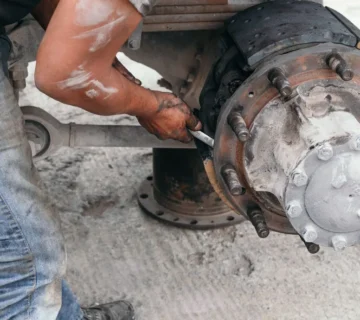As you navigate the roads, your car’s brake system plays a crucial role in ensuring your safety. At the heart of this system lies an often-overlooked component: the brake master cylinder. This vital part is responsible for converting the force of your foot on the brake pedal into hydraulic pressure, which then activates your vehicle’s brakes. The proper functioning of this component is essential for smooth braking performance, especially in emergency situations. Regularly maintaining your brake master cylinder is key to avoiding costly repairs and ensuring your vehicle responds effectively when you need it most. In this article, we’ll explore how this critical part works, common signs of failure, and why routine maintenance can prevent major brake issues. Taking care of this component can also help you avoid potential breakdowns, improving the longevity of your vehicle’s braking system and enhancing overall driving safety.
Understanding the Brake Master Cylinder: The Heart of Your Braking System
The brake master cylinder is a crucial component of your vehicle’s brake system, playing a pivotal role in ensuring safe and efficient braking performance. This essential part acts as the command center for your car’s entire braking mechanism, translating the force you apply to the brake pedal into hydraulic pressure that activates the brakes at each wheel.
How the Brake Master Cylinder Works
When you press the brake pedal, it activates a piston inside the master cylinder. This piston pushes brake fluid through a series of lines and hoses, creating hydraulic pressure that ultimately engages your car’s brake components. The master cylinder’s design allows it to maintain consistent pressure throughout the brake system, ensuring reliable and responsive braking action.
The Impact on Car Safety and Performance
A well-functioning brake master cylinder is vital for optimal braking performance and overall vehicle safety. It ensures that your car can stop quickly and smoothly when needed, which is especially crucial in emergency situations. Regular maintenance and inspection of your brake master cylinder can help prevent brake failure and enhance your vehicle’s longevity.
Signs of a Failing Master Cylinder
To maintain peak braking performance, it’s important to recognize signs of a failing brake master cylinder. These may include:
- A spongy or soft brake pedal
- Uneven braking or pulling to one side
- Visible brake fluid leaks
- Warning lights on your dashboard
By understanding the role of the brake master cylinder and staying attentive to these signs, you can ensure your car’s braking system remains in top condition, promoting safer driving experiences.
The Crucial Role of the Brake Master Cylinder in Braking Performance
The brake master cylinder is the heart of your vehicle’s brake system, playing a pivotal role in ensuring optimal braking performance and car safety. This essential component converts the force applied to the brake pedal into hydraulic pressure, which then activates the brake components at each wheel.
How the Brake Master Cylinder Functions
When you press the brake pedal, it pushes a piston inside the master cylinder. This action forces brake fluid through the brake lines to the calipers or wheel cylinders. The pressure generated by the master cylinder is what enables your car to slow down or stop effectively.
Impact on Overall Vehicle Braking
The efficiency of your brake master cylinder directly affects your car’s stopping power. A well-maintained cylinder ensures consistent and reliable braking performance, which is crucial for safe driving in various road conditions. It works in harmony with other brake components to provide the stopping force needed to control your vehicle.
Signs of a Failing Master Cylinder
To maintain optimal braking performance, it’s important to recognize potential issues with your brake master cylinder. Warning signs may include:
- A spongy or soft brake pedal
- Uneven braking or pulling to one side
- Visible brake fluid leaks
Regular maintenance and prompt attention to these symptoms can help prevent more serious brake system failures, ensuring your vehicle remains safe on the road.
Maintaining a Healthy Brake Master Cylinder for Optimal Car Safety
Regular Inspections for Peak Braking Performance
Ensuring your brake master cylinder remains in top condition is crucial for your vehicle’s overall braking performance and safety. Regular inspections of this vital component can prevent unexpected failures and maintain optimal car safety. During these checks, look for signs of fluid leaks, corrosion, or damage to the cylinder’s housing. A well-maintained brake master cylinder contributes significantly to the efficiency of your entire brake system.
Proper Fluid Maintenance
The brake fluid level and quality are essential aspects of brake master cylinder health. Low fluid levels can impair braking performance and potentially lead to system failure. Regularly check the fluid level and top up as needed with the manufacturer-recommended brake fluid. Additionally, brake fluid absorbs moisture over time, which can corrode brake components. To maintain peak car safety, follow your vehicle’s maintenance schedule for brake fluid replacement.
Addressing Warning Signs Promptly
Be attentive to warning signs that may indicate issues with your brake master cylinder. These can include a spongy brake pedal, increased stopping distance, or warning lights on your dashboard. If you notice any of these symptoms, have your brake components inspected by a qualified mechanic immediately. Prompt attention to these warning signs can prevent more severe problems and ensure your vehicle braking remains reliable and safe.
Diagnosing and Troubleshooting Issues with the Brake Master Cylinder
The master cylinder is a critical part of your car’s brake system, crucial for safe driving and optimal braking. Spotting potential issues early can help prevent more serious problems. Here are some common signs that it may need attention:
Warning Signs
- Low or spongy brake pedal
- Uneven braking or pulling to one side
- Brake warning light illuminated on the dashboard
- Visible fluid leaks under the vehicle
If you notice any of these symptoms, it’s crucial to have your brake components inspected by a qualified mechanic promptly.
Diagnostic Steps
- Check brake fluid levels regularly
- Inspect brake lines for leaks or damage
- Test brake pedal firmness and responsiveness
- Perform a visual inspection of the master cylinder for cracks or leaks
Remember, maintaining your car’s brake system is vital for vehicle safety. Regular inspections and addressing issues promptly can significantly improve your car’s braking performance and overall safety on the road.
If you’re experiencing persistent braking issues, it’s best to consult a professional. They can perform a comprehensive diagnostic of your brake master cylinder and other brake components to ensure your vehicle’s braking system is functioning optimally.
Brake System FAQs: Keeping Your Brakes in Top Condition
How Often Should I Check My Brake Master Cylinder?
Regular inspection of your brake system is essential for optimal performance. The master cylinder plays a key role in this process, so it’s recommended to check it visually at least once a month. Look for any signs of fluid leakage or a low fluid level in the reservoir. If you notice any issues, consult a professional mechanic promptly to maintain your vehicle’s safety.
What Are Common Signs of Brake Master Cylinder Failure?

Recognizing signs of a failing braking system is vital for car safety. A spongy or soft pedal could suggest air in the lines or a leak. Uneven braking, where the vehicle pulls to one side, or a brake warning light are also warning signs. If you notice any of these issues, have your brake components checked promptly to maintain proper vehicle performance.
How Does the Brake Master Cylinder Affect Overall Braking Performance?
The master cylinder plays a crucial role in your car’s braking system. It converts the pressure applied to the brake pedal into hydraulic force, which then activates the brake calipers or wheel cylinders. Regular maintenance of this component is essential for ensuring smooth and effective braking. By keeping the master cylinder in good condition, you help maintain consistent braking performance, which significantly contributes to the safety and handling of your vehicle.
Conclusion
In conclusion, the brake master cylinder plays a vital role in your vehicle’s braking system and overall safety. As you’ve learned, this essential component converts the force from your foot on the brake pedal into hydraulic pressure that activates the brakes. Regular maintenance and prompt replacement of a failing brake master cylinder are crucial for optimal braking performance. By understanding its function and staying vigilant for signs of wear, you can ensure your vehicle’s braking system operates at peak efficiency. Remember, a well-maintained brake master cylinder is key to safe, confident driving on the road. Don’t overlook this critical part during your next vehicle inspection or service appointment.




